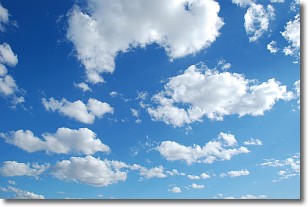Weather Alert in Minnesota
Air Quality Alert issued May 12 at 4:05PM CDT by NWS Grand Forks ND
AREAS AFFECTED: West Polk; Norman; Clay; Kittson; Roseau; Lake Of The Woods; West Marshall; East Marshall; North Beltrami; Pennington; Red Lake; East Polk; North Clearwater; South Beltrami; Mahnomen; South Clearwater; Hubbard; West Becker; East Becker; Wilkin; West Otter Tail; East Otter Tail; Wadena; Grant
DESCRIPTION: * WHAT...The Minnesota Pollution Control Agency has issued an Air Quality Alert for ozone pollution. The Air Quality Index (AQI) is expected to reach the Orange or Unhealthy for Sensitive Groups category. * WHERE...West central, east central, central, south central, southwest, north central, and northwest Minnesota. * WHEN...From noon CDT to 9 PM CDT Tuesday. * IMPACTS...Sensitive groups, such as people with lung disease (including asthma), heart disease, children and older adults, and people who are active outdoors, may experience health effects. * ADDITIONAL DETAILS...Ground-level ozone is expected to be high once again during the afternoon hours on Tuesday across roughly the western two-thirds of Minnesota, including the Twin Cities Metro. Mostly sunny skies, warm temperatures and low humidity will provide a favorable environment for two types of pollutants (volatile organic compounds and nitrogen oxides) to react with sunlight in the air to produce ground-level ozone. Ozone will remain elevated on Wednesday as sunny skies, warm temperatures and dry conditions persist.
INSTRUCTION: Sensitive groups, such as people with lung disease (including asthma), heart disease, children and older adults, and people who are active outdoors, should limit prolonged or heavy outdoor exertion. Reduce or eliminate activities that contribute to air pollution, such as outdoor burning, and use of residential wood burning devices. Reduce vehicle trips and vehicle idling as much as possible.
Want more detail? Get the Complete 7 Day and Night Detailed Forecast!
Current U.S. National Radar--Current
The Current National Weather Radar is shown below with a UTC Time (subtract 5 hours from UTC to get Eastern Time).

National Weather Forecast--Current
The Current National Weather Forecast and National Weather Map are shown below.

National Weather Forecast for Tomorrow
Tomorrow National Weather Forecast and Tomorrow National Weather Map are show below.

North America Water Vapor (Moisture)
This map shows recent moisture content over North America. Bright and colored areas show high moisture (ie, clouds); brown indicates very little moisture present; black indicates no moisture.

Weather Topic: What is Condensation?
Home - Education - Precipitation - Condensation
 Next Topic: Contrails
Next Topic: Contrails
Condensation is the process which creates clouds, and therefore
it is a crucial process in the water cycle.
Condensation is the change of matter from a state of gas into a state of liquid,
and it happens because water molecules release heat into the atmosphere and
become organized into a more closely packed structure, what we might see as
water droplets.
Water is always present in the air around us as a vapor, but it's too small for
us to see. When water undergoes the process of condensation it becomes organized
into visible water droplets. You've probably seen condensation happen before on the
surface of a cold drink!
Next Topic: Contrails
Weather Topic: What are Cumulonimbus Clouds?
Home - Education - Cloud Types - Cumulonimbus Clouds
 Next Topic: Cumulus Clouds
Next Topic: Cumulus Clouds
The final form taken by a growing cumulus cloud is the
cumulonimbus cloud, which is very tall and dense.
The tower of a cumulonimbus cloud can soar 23 km into the atmosphere, although
most commonly they stop growing at an altitude of 6 km.
Even small cumulonimbus clouds appear very large in comparison to other cloud types.
They can signal the approach of stormy weather, such as thunderstorms or blizzards.
Next Topic: Cumulus Clouds
Current conditions powered by WeatherAPI.com




